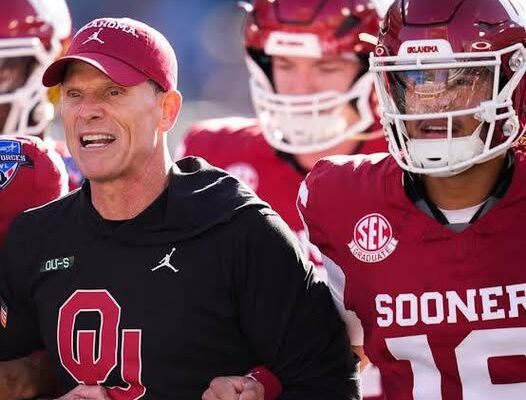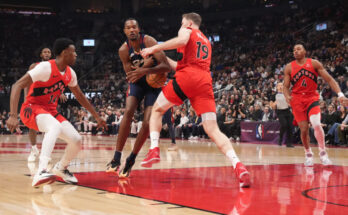The buzz surrounding the impending matchup between the Oklahoma Sooners and the Michigan Wolverines has reached fever pitch. As kickoff draws inexorably closer, what once might have been casual interest has ripened into full-blown fan fervor. Ticket demand is surging; resale platforms are awash with listings, and stadium sections are being snapped up at record pace. For fans of both storied programs, this clash represents more than just another game—it’s a historical moment where college football’s past, present, and future collide. And the result? A spectacular escalation in ticket prices, intense online bidding wars, and a palpable sense of excitement that vibrates across social media, sports talk shows, and university communities alike.
From the moment the matchup was announced, the ticket market began to heat up. Scouts of all types—passionate season ticket holders, dedicated alumni, and casual fans drawn in by the promise of a high-stakes showdown—flocked to the internet. Initial pools of availability vanished overnight. Soon, posts on ticket forums and resale platforms sat at steep premiums. What was once priced at the standard rate doubled and tripled as algorithms responded to demand and scarcity. As it became clear that the game wasn’t just another regular-season fixture but a potential playoff preview, demand extended beyond traditional fan bases. Out-of-state supporters, neutrals yearning for elite-level college football, even foreign fans—driven by the game’s national broadcast reach—all added to the urgency.
Economic ripple effects are evident. Early-bird specials offered by local hotels near the venue sold out within hours. Airbnb postings skyrocketed, with some homeowners listing entire properties at premium prices. Nearby restaurants and bars scrambled to expand staffing, lest they miss out on the influx of fans. Merchandise vendors ramped up production, anticipating a surge in jersey orders, commemorative hats, and game-day memorabilia. In essence, the entire local economy is primed to benefit from the ticket rush, and the stadium’s seating grid has become the epicenter of a larger commercial swell.
This phenomenon is hardly surprising when one considers what’s at stake. Both Oklahoma and Michigan boast rich football legacies, with championship banners, legendary coaches, and NFL-caliber talent gracing their programs. The media coverage has been relentless, with analysts dissecting every strategic nuance—from coaching philosophies to quarterback spearheads and defensive prowess. The national spotlight casts this as the marquee game of the season, and the fanbase knows it. For those who attend the game, it’s not just about witnessing athletic excellence—it’s about carving out personal memories tied to one of college football’s most anticipated spectacles.
Within the broader tapestry of college football, this game symbolizes many threads. It’s a testament to the sport’s evolving playoffs structure—where marquee inter-conference matchups now carry postseason weight. Schedule-makers, knowing fans’ appetite for big games, have seeded high-profile crossovers earlier in the season. The Oklahoma–Michigan clash is the prototypical “power conference” showdown devised to appeal to viewers, advertisers, and recruits. In many ways, its ticket demand is a byproduct of the sport’s growth—as institutions chase ratings, recruits chase exposure, and fans chase unforgettable experiences.
Digital ticket platforms are the epicenter of the action. Major resale websites display color-coded seat maps where available tickets, especially those in prime zones near the midfield, are listed at premium rates. Fans have become savvier. Some use ticket alert services to instantly notify them of new listings, while others participate in ticket “drops” timed with team announcements or stadium releases. Social media amplifies these efforts: hashtags, sharable memes, and crowd-sourced tips coalesce into viral campaigns urging fans to act quickly. Meanwhile, some diehards are willing to pay exorbitant fees just to ensure their seats—reflecting not only their financial commitment but their emotional connection.
This surge in demand isn’t without repercussions. Some critics argue that the rising ticket prices are leaving longtime supporters priced out. Young students, often the lifeblood of college football’s gameday atmosphere, find themselves outbid by deep-pocketed enthusiasts or corporate buyers. There’s ongoing debate over the role of athletic departments in capping resale prices, expanding student sections, or creating more equitable ticketing tiers. So far, few groundbreaking solutions have materialized, and the demand-driven market remains dominant. Nevertheless, voices within the fan community are calling for reforms that preserve game-day access for all.
The rivalry’s history adds even more weight. Although Oklahoma and Michigan have had few direct clashes, each program’s dominance in certain eras breeds an idealized matchup. In the 1930s, Michigan was a preseason powerhouse; in later decades, Oklahoma reached dynastic heights under Bud Wilkinson and Barry Switzer. More recently, both teams have enjoyed successful seasons with iconic coaches—Lincoln Riley, Ryan Day, Jim Harbaugh—reinforcing their relevance. When they finally meet, it’s not only a contest of present-day squad strength but an ongoing narrative of which lineage shapes modern college football’s direction. Fans, perceiving this as more than just a game, are investing accordingly.
Consider the travel scene. Road trips to the game have turned into immersive fan pilgrimages. Tailgate parties, often day-long affairs with live music, grilling, and alumni reunions, are being arranged well in advance. RV caravans departing from Oklahoma City, Norman, Ann Arbor, and beyond are mapping routes to coincide with official meetups. Some athletic foundations organize chartered buses to ferry groups, while key alumni communities earmark “block” zones near the field. The infrastructure built to support these journeys—transportation, hospitality, memorabilia—serves as another dimension of the ticket-driven economic surge.
Recruiting, too, benefits. High school athletes eyeing a football future are watching the madness up close. A packed, roaring stadium sends a message about program prestige, facilities, and fanbase intensity. Oklahoma and Michigan both recruit heavily from the Midwest, South, and Texas. A thrilling display before a nationally televised audience might sway undecided prospects. Tickets purchased by aspiring athletes, and entourage members also contribute to the flood. Coaches and boosters understand this dynamic; face value or not, ticket demand is a signal of institutional appeal.
Media valuations escalate in tandem. Television networks pay handsomely for rights to broadcast high-profile games. Advertisers, aware that viewership peaks when elite teams collide, place their premium commercials during these broadcasts. Streaming platforms have emerged as additional ticket markets—offering virtual seats to digital audiences. Those seeking to “attend” the game from home must pay for a subscription or on‑demand service. Indeed, digital impressions become currency, and ticket demand—both physical and virtual—factors into advertising rates. So, whether a fan owns a seat or a stream, they’re paying in one form or another.
It’s easy to craft dramatic images: a full stadium erupting on fourth down, the synchronized thunder of marching bands, the mass of colors blending crimson and maize/blue in the stands. Such visual poetry helps explain why fans are willing to do almost anything to be there. The narrative suggested by ticket demand isn’t simply about economics—it’s about belonging, identity, tradition, and spectacle. Families bring generations; students rally behind school pride; alum‑fans return with nostalgic zeal. Tickets thus become more than entry—they are tokens of affiliation and shared history.
With kickoff looming, speculation abounds about ticket availability. Some resale platforms suggest bins of seats may be released in waves as both universities shuffle inventory. Others note cancellations or no‑shows just before game day could yield last-minute deals. But these are gambles. Ticket arbitrageurs have been snatching up any accessible seats and relisting them at steep markups. Unless fans are willing to dig deep or wait until the eleventh hour, they may miss the opportunity altogether—and the psychological impact is becoming part of the fervor. FOMO—the fear of missing out—is driving faster purchases even among less die‑hard fans.
Institutional measures are being considered. Athletic departments are evaluating options to re-sell returned student tickets to alumni at face value, or to create dynamic-pricing installations where unsold seats might dip slightly if demand forecasts change. Officials say these approaches could balance revenue with accessibility. But with demand currently so high, potential price drops are unlikely. For now, the intent is to ride the wave, capitalize on interest, and invest the returns—whether in facilities, scholarships, or coaching staff.
Weaving through all this is communication buzz. Fans discuss seating logistics: which sections offer the best sightlines, where the shade falls in late afternoon, and what concessions to bring. They compare travel arrangements. They debate whether the smallest difference—a seat right over the Oklahoma bench vs. one near Michigan’s—is worth a few hundred dollars. Social media threads pulse with each new listing, with fans tagging each other to share leads. Podcasts feature segments titled “Ticket Report: Oklahoma vs Michigan Special Edition.” Even national talk shows spotlight the sale frenzy as emblematic of college football’s resurgence and commercial momentum.
Unsurprisingly, the consequences extend beyond the stadium. Local economies anticipate surging foot traffic. Restaurants in the nearby district are hiring extra staff; hotels are offering Pac-12 packages bundled with game-day transportation; local transit systems are scheduling extra buses and trains. Even gas stations near highways report higher bookings for rental cars. The city hosting the game is preparing for an influx that rivals postseason events. Ticket demand thus triggers chain reactions—infrastructure, service, hospitality, planning—that stretch well beyond ticket platforms.
To put it bluntly, this is more than a game. It’s one of the highest-stakes college matchups in recent memory. It’s a showcase for television, recruiting, urban economies, and institutional clout. Ticket demand reflects all these forces converging at once. For fans who secure seats, it will be a chance to witness gridiron drama under stadium lights. For the broader world of college athletics, it underscores the heights fan interest, media valuation, and institutional strategy can reach. And for those still trying to snag a ticket, the window is closing fast.
With kickoff nearly upon us, ticket seekers face a critical moment. Will they pay the premiums now, or risk losing out? Will universities intervene to ease pricing disparities? Will local businesses capitalize on the surge—and does the economic boost only scratch the surface of the impact? There’s still time for surprises: cancellations, official releases, last-minute strategies—they happen every year. But the data, the marketplace sentiment, and the buzz all point to one clear truth—ticket demand for Oklahoma vs Michigan has skyrocketed, and fans are rushing desperately to secure a seat. As kickoff nears, one thing is certain: this is far more than just another day of college football.



